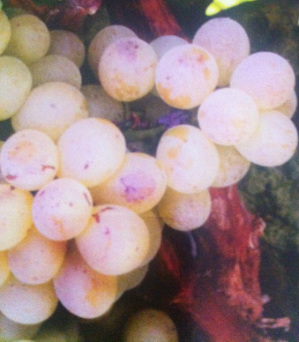
This is a homage to Chardonnay at it's finest.
Many years ago, when the Australian winemaking industry started making waves in the UK, Chardonnay was a prime export. Over-oaked by adding cheap oak chips to stainless steel vats, or worse, oak essence, the wines sent many running from the grape.
The ABC now drinks anything but Chardonnay because they don't want to risk such poor quality wine again. And they're missing out.
Chardonnay is a classic and noble grape variety. It's the base of many Champagnes. It's home is Burgundy in France. It's here, perhaps not in the village which gave the grape it's name, that it finds it's classic and finest expressions. It also travels well. Now it's one of the most widely planted grape varieties in the world. And it's a varietal which expresses, more than most, the wine maker's style and the terroir, or climate in which it's grown.
So if you've not tried Chardonnay for a while, it really is worth trying another one.
One steely, green apple, cold and minerally austere; the other rounder of body, and with a touch of cream on the slightly tropical fruit notes.
Mr Purple Teeth renewed his proclamations of affection. I wondered, how would this compare with his all time favourite Chardonnay Puligny-Montrachet? A plan was born.
The Catena was hastily re-corked and for once, with no Friday night obligations, we decided to open a bottle of Ropiteau Puligny-Montrachet 2008 we'd received as a Christmas gift.
It can be difficult to buy a wine gift for a wine professional. I'm grateful to the friends who get it right!
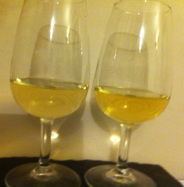
If you want to read more about what makes Puligny Montrachet so special, there's a lot of background detail here, at Wine-Searcher.com which there's no point in my repeating.
One day, I hope to sample the ultra premium Batard-Montrachet, but for now, I'll dream.
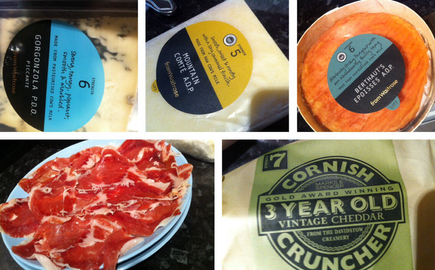
Many people instantly think of red wine with cheese. Not me. My cheese preferences tend to the stinky end of the spectrum, and the acidity in white wines cuts right through this, where the red wine fruit can be dulled, flattened and ultimately become tinny.
Of course, we sampled both wines before adding food. The Catena remained strong. The Puligny was quite different. While the body and acidity were similar, there was a more viscous, silky mouthfeel. Mr Purple Teeth went quiet. Was he disappointed? No. He'd just gone into his happy place. Silently savouring every droplet, before announcing judgement. He remains a fervent fan of the French.
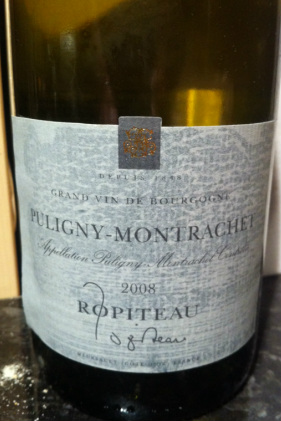
Of course, we sampled both wines before adding food. The Catena remained strong. The Puligny was quite different. While the body and acidity were similar, there was a more viscous, silky mouthfeel. Mr Purple Teeth went quiet. Was he disappointed? No. He'd just gone into his happy place. Silently savouring every droplet, before announcing judgement. He remains a fervent fan of the French.
Although there's smoke and spice on the palate here, the more obvious flavours were dairy based. Creamy, buttery, rich, like an unsalted Charentes butter on a toasted Brioche, there was fruit, but it played second fiddle to these wine-making flavours. Apple, pear, and perhaps some membrillo, this was a sipping wine worthy of considered attention. So much, that I didn't actually take any notes.
The chances of you going out to buy a bottle are slim. So the point of the exercise was to show how different even great Chardonnays can be from each other rather than to provide in depth descriptions.
With the meaty Spanish ham, the Catena Chardonnay jumped to attention. Almost steak-like in intensity, the meat really shone with the savoury notes in the Argentine wine. Fresh, delicate, unadulterated crab, though, put on a song and dance routine with the Puligny. As food pairings go, it's probably one of my favourites of the year so far. Had the crab been tampered with, it might have been a different story, but freshness all the way made this chilly September evening feel more like spring.
When it came to the cheeses, Gorgonzola Piccante (Italy), Cornish Cruncher 3 year aged Cheddar (M&S), cave-aged Gruyere (Swiss), traditional Comté (France) and Burgundian Epoisses, we were not making it easy on any wine. Most came with a rating of 6 or 7 out of 5 on the strength scale. Still, again, they worked. The French and Swiss Cheeses worked best with the Burgundy, while the southern wine fared well with the Cheddar and Gorgonzola, enhancing that umami, savoury character.
In the end, I wouldn't really recommend putting an expensive wine up against Epoisses, but I'd certainly favour a white over a red.
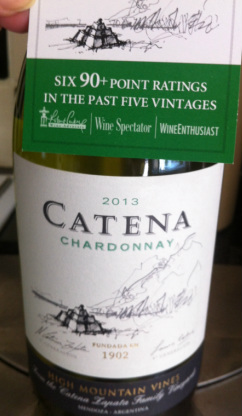
If you've never drunk 2 wines side-by-side to compare with each other, or with food, it's worth doing sometime. You'll discover a lot about what works, what doesn't, and you'll gain a deeper understanding of what you love and why. I urge you to make a comparison, whether north and south, inexpensive versus pricey, or oaked versus unoaked, or simply 2 different wines from the same grape and region. It's a great way to see what is really "varietal character" (that which makes the grape identifiable, and wines made from it similar), and to understand the influence of region, soil, climate and wine-making style - or at least see how the wines differ from each other.
Opening your eyes in this way, can give you more confidence to explore in future.
If you'd like to organise a Purple Teeth wine tasting, to be guided through some taste comparisons, get in touch. There's still some availability in the lead up to Christmas and it makes a great event with your team mates for office celebrations, or even a lovely gift.
Otherwise, keep exploring wines at home, and remember to let us know what you're enjoying via Twitter or our Facebook page.
Cheers!

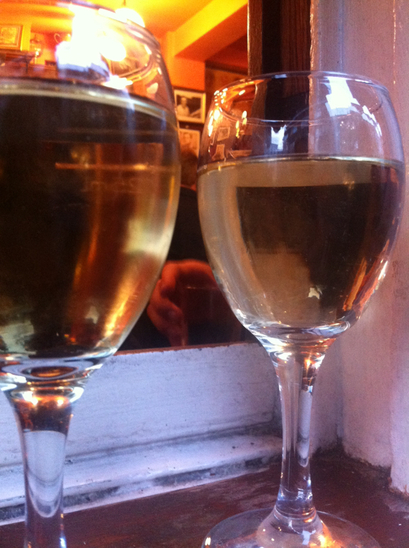
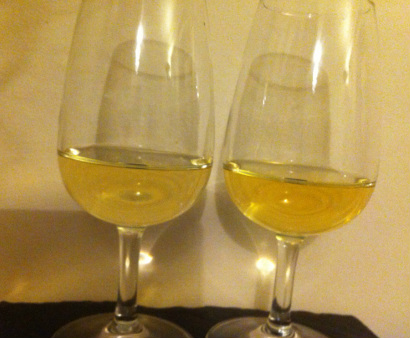

 RSS Feed
RSS Feed
